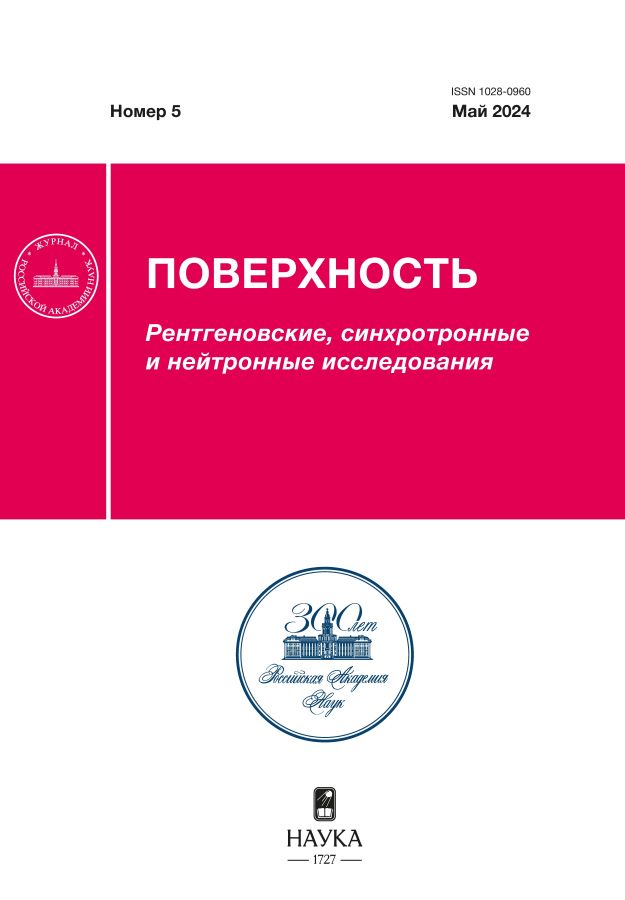Mechanoluminescence and Optically Stimulated Antistokes Luminescence of Composites Based on Epoxy Resin and Strontium Aluminate Phosphors SrAl2O4:Eu2+,Dy3+ and Sr4Al14O25:Eu2+, Dy3+
- Authors: Banishev А.F.1
-
Affiliations:
- Kurchatov Institute
- Issue: No 5 (2024)
- Pages: 16-23
- Section: Articles
- URL: https://archivog.com/1028-0960/article/view/664637
- DOI: https://doi.org/10.31857/S1028096024050031
- EDN: https://elibrary.ru/FUMTWP
- ID: 664637
Cite item
Abstract
Composite mechanoluminescent materials (composites) based on epoxy resin transparent in the visible range of spectrum and fine-dispersed powders of mechanoluminescent phosphors SrAl2O4:Eu2+, Dy3+ and Sr4Al14O25:Eu2+, Dy3+ were obtained. The mechanoluminescence and photoluminescence spectra of composites under the combined influence of short-wave (λ = 405 nm) and long-wave (λ = 1.06 µm) laser radiation were studied. The attenuation of optically stimulated antistokes luminescence of the composite under the influence of a sequence of pulses of longwave laser radiation was investigated. The composite was pre-irradiated with shortwave laser radiation. The obtained composite was used to visualize heat propagation and thermal deformations in metal plates arising under the action of powerful laser pulses and distribution of deformations under mechanical impact. For this purpose, a thin layer of the composite was applied to the surface of the materials under study. The composite had good adhesion to the surface of the materials and a high yield of mechanoluminescence, which allowed to visualize the distribution of temperature and surface deformations with a good spatial and temporal resolution.
Full Text
About the authors
А. F. Banishev
Kurchatov Institute
Author for correspondence.
Email: banishev@mail.ru
Russian Federation, Moscow
References
- Takahashi D., Hubner J.P. // Exp Mech. 2010. V. 50. № 3. P. 365. https://www.doi.org/10.1007/s11340-009-9232-y
- Zhao T., Le V.T., Goo N.S. // J. Mech. Sci. Technol. 2020. V. 34. № 4. P. 1655. https://www.doi.org/10.1007/s12206-020-0328-8
- Karpagaraj A. Optical Methods in Stress Measurement. // Applications and Techniques for Experimental Stress Analysis. / Ed. Balaji P.S. IGI Global. 2020. P. 102. ISBN: 9781799816904. https://www.doi.org/10.4018/978-1-7998-1690-4
- Baek T.H., Kim M.S. Speckle Interferometry for Displacement Measurement and Hybrid Stress Analysis. // Interferometry – Research and Applications in Science and Technology. / Ed. Pavlov I. Elsevier, 2012. P. 149. ISBN 978-953-51-0403-2. https://www.doi.org/10.5772/2635
- Kim H.J., Ji S., Han J.Y., Cho H.B., Park Y.-G., Choi D., Cho H., Park J.-U., Im W.B. // NPG Asia Materials. 2022. V. 14. P. 26. https://doi.org/10.1038/s41427-022-00374-8
- Ahn S.Y., Timilsina S., Shin H.G., Lee J.H., Kim S.-H., Sohn K.-S., Kwon Y.N., Lee K.H., Kim J.S. // iScience. 2023. V. 26. Iss. 1. P. 105758. https://doi.org/10.1016/j.isci.2022.105758
- Wu Y., Gan J., Wu X. // J. Mater. Res. Technol. 2021. V. 13. P. 1230. https://doi.org/10.1016/j.jmrt.2021.05.035
- Fujio Y., Xu Ch.-N., Sakata Y., Ueno N., Terasaki N. // J. Alloys Compd. 2020. V. 832. P. 154900. https://doi.org/10.1016/j.jallcom.2020.154900
- Banishev A.F., Banishev A.A. // Int. J. Modern Phys. B. 2019. V. 33. № 30. P. 1950367. https://www.doi.org/10.1142/S02179792195036614
- Wang Ch., Peng D., Pan C. // Sci. Bull. 2020. V. 65. № 14. P. 1147. https://doi.org/10.1016/j.scib.2020.03.034
- Zhang J.-Ch., Wang X., Marriott G., Xu Ch.-N. // Prog. Mater. Sci. 2019. V. 103. P. 678. https:// www.doi.org/10.1016/j.pmatsci.2019.02.001
- Wang X., Peng D., Huang B., Pan C., Wang Zh.L. // Nano Energy. 2019. V. 55. P. 389. https:// www.doi.org/10.1016/j.nanoen.2018.11.014
- Liu L., Xu Ch.-N., Yoshida A., Tu D., Ueno N., Kainuma Sh. // Adv. Mater. Technol. 2018. V. 4. Iss. 1. P. 1800336. https://www.doi.org/10.1002/admt.201800336
- Feng A., Smet P.F. // Materials. 2018. V. 11. № 484. P. 1. https://www.doi.org/10.3390/ma11040484
- Банишев А.Ф. // Письма в ЖТФ. 2021. Т. 47. № 11. С. 33. https://www.doi.org/10.21883/PJTF.2021.11.51005.18739
- Банишев А.Ф. // Поверхность. Рентген. синхротр, и нейтрон. исслед. 2022. Т. 3. С. 50. https://www.doi.org/10.31857/S1028096022030049
- Sun H., Zhao Y., Wang Ch., Zhou K., Yan Ch., Zheng G., Huang J., Dai K., Liu Ch., Shen Ch. // Nano Energy. 2020. V. 76. P. 105035. https://doi.org/10.1016/j.nanoen.2020.105035
- Azad A.I., Rahimi M.R., Yun G.J. // Smart Mater. Struct. 2016. V. 25. P. 095032. https://www.doi.org/10.1088/0964-1726/25/9/095032
- Terasaki N., Yamada H., Xu Ch.-N. // Catalysis Today. 2013. V. 201. P. 203. https://doi.org/10.1016/j.cattod.2012.04.040
- Chandra B.P., Chandra V.K., Piyush Jha. // Physica B: Cond. Matter. 2015. V. 463. P. 62. https://doi.org/10.1016/j.physb.2015.01.030
- Bünzli J.-C.G., Wong K.-L. // J. Rare Earths. 2018. V. 36. № 1. P. 1. https://doi.org/10.1016/j.jre.2017.09.005
- Xiong P., Peng M., Yang Zh. // iScience. 2021. V. 24. P. 101944. https://doi.org/10.1016/j.isci. 2020.10194
- Dorenbos P. // Journal of The Electrochemical Society. 2005. V. 152(7). P. H107-H110. https://doi.org/10.1149/1.1926652
- Katsumata T., Toyomane S., Sakai R., Komuro S., Morikawa T. // J. Am. Ceram. Soc. 2006. V. 89 (3). P. 932–936. https://doi.org/10.1111/j.1551-2916.2005.00856.x
- Kim J.S., Koh H.J., Lee W.D., Shin N., Kim J.G., Lee K.H., Sohn K.S. // Met Mater. Int. 2008. V. 14. P. 165. https://www.doi.org/10.3365/met.mat.2008.04.16.
- Timilsina S., Lee K.H., Jang I.Y., Kim J.S. // Acta Materialia. 2013. V. 61. № 19. P. 7197. https://doi.org/10.1016/j.actamat.2013.08.024
- Timilsina S. Lee K.H., Kwon Y.N., Kim J.S. // J. Am. Ceram. Soc. 2015. V. 98. № 7. P. 1. https://doi.org/10.1111/jace.13566
- Nao Terasaki, Nao Ando, Kei Hyodo. // Japanese Journal of Applied Physics. 2022. V. 61. P. SE1009-SE1006. https://doi.org/10.35848/1347-4065/ac5069
- Ha Jun Kim, Sangyoon Ji, Ju Yeon Han, Han Bin Cho, Young-Geun Park, Dongwhi Choi, Hoonsung Cho, Jang-Ung Park, Won Bin Im. // NPG Asia Materials. 2022. 14:26. P. 1–12. https://doi.org/10.1038/s41427-022-00374-8
Supplementary files















